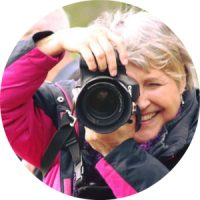
However, when I first retired, I knew little about photography and used a very basic point-and-shoot camera. But thanks to discovering Great Escape Publishing, and attending some of their workshops, I am now able to take saleable images and upload them to stock agencies.
If you’re like me and you’re just starting out, here are a few things I’ve learned along the way about selling travel photos as stock…
Pay attention to keywords: Captioning and keywording your images is essential for your photos to appear in buyer searches. Think to yourself: “Who would want this image?” “How would they search for it?” and “What words might they use?”
For example, I have lots of images taken in New South Wales, Australia. Should I put New South Wales, or just NSW? My suggestion is to put both. It’s the same with USA, or America, or United States, or even United States of America. By thinking of all the ways someone might search—especially someone from another country—you increase your chance of a sale.
Also, use words that describe what you see in your image. For example, for a photo of a woman riding a horse, is she sitting sidesaddle or upright? Is she wearing jeans, a skirt, or a helmet? Is the horse cantering or trotting? Try to include these relevant details, because you’ll find your sales improve when you keyword effectively.
Remember the details: If there’s one thing I’ve learned the hard way, it’s to caption my images immediately after I put them into Lightroom. In the past, I’ve forgotten the details about what’s in my photos… and wasted hours Googling to find out exactly where and what the image is about.
Another easy way to keep track of that information is to take photos of any signs or tourist information boards in the vicinity. I also carry a notebook to write notes about what I’m photographing, for when there are no signs.
Plan ahead: I’ve also found it useful to search my stock agencies for any similar photos to mine, or the ones I intend on taking. That way, I can decide on different angles, find ways to take a different aspect, or fill in obvious gaps in what is already there. In this way, my images are more likely to sell.
Shoot it all: Many photographers who are new to the idea of taking stock photos fret about what photos to take. My advice is to take anything and everything that strikes your fancy, then upload, upload, upload. Stock photography really is about numbers. The more you have in your stock portfolio, the more chance you have of making sales.
If you really cannot decide what to shoot, most stock agencies now have “Stock Photo Request Blogs” for their contributors to trigger that “ah-ha!” moment. But the most important thing is to have fun and enjoy the journey.
